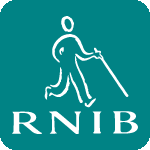Accessibility in User-Centered Design: User Group Profiles
User group profiles are created during User Analysis, which is covered in the Accessibility in Analysis chapter.
This section provides information on the following:
- Background: User Group Profiles in User-Centered Design (UCD)
- Accessibility Considerations for User Group Profiles
- Detailed Examples of User Group Profiles
Aspects of the examples that specifically relate to accessibility are highlighted, and surrounded by transparent images with alternative (ALT) text "start highlight" and "end highlight" for screen reader users and others who don't see images.
Background: User Group Profiles in User-Centered Design (UCD)
The two most important issues for usability are the user tasks and [users'] individual characteristics and differences. [1]
User group profiles describe the characteristics of product users, that is, the people who use a product. For example, for a web-based office product, characteristics defined for user groups include details on:
- Demographics
- Job responsibilities and tasks
- Frequency of use (for example, daily, a couple times per week, once per month, once per year)
- Hardware (for example, laptop or desktop, processor speed, monitor resolution)
- Environment (for example, shared office, private office, shared public terminal, home)
- Software (for example, operating system, browser version)
- Computer experience
- Web application experience (for example, do they recognize clickable elements)
- Task knowledge (i.e., how well do they understand the task that they are doing, as opposed to understanding the application itself)
Sources of information when developing user group profiles for a new product include general market research, customers of competitors' products, focus group sessions, and interviews with and observations of prospective users. User group profiles for an enhancement of an existing product might be based on surveys, focus groups, contextual interviews, and usability tests of the current version of the product. [2]
The first task in developing user group profiles is defining user groups. Typically there are several categories of users for a given product. For example, a web-based application that handles human resource (HR) management data (employee records, compensation, benefits, etc.) might have the following user groups: HR managers, HR specialists, HR administrative assistants, non-HR managers, non-HR administrative assistants, employees, and retired employees.
Generally, user group profiles are not developed for all user groups, rather they are developed for the primary user groups and for user groups that designers don't know well. Because many designers start out with little or no knowledge of accessibility issues, adding accessibility considerations to user group profiles is particularly important.
Accessibility Considerations for User Group Profiles
Because people with disabilities are potentially members of all user groups, accessibility considerations apply to all user group profiles. When redesigning existing products, be careful to avoid the pitfall of "we don't have any users with disabilities". An existing product that is inaccessible is quite likely not to have users with disabilities, whereas if it is designed to be accessible, users with disabilities might use the product.
Another avoidable pitfall is making assumptions about what products a person with a disability does or does not want to use. For example, in one case a designer assumed that a person who is blind would not have any reason to use a photocopier. However, a person who is blind might use a photocopier to make copies for others or to copy pages from a book in order to scan them into a speech output program.
A usability testing participant with low vision remarked when he was frustrated by inaccessible websites when he was comparing auto insurance rates for his wife's car and he said, "as though a person who doesn't drive would not be buying auto insurance."
In some cases, a person with a disability might actually be a potential user of a product even when their other characteristics don't fit the primary user profile. Some people with disabilities need features found only in high-end products. For example, a digital recorder with audible cueing and indexing that was designed for executives might be used by a student who is blind.
The extent to which accessibility considerations are included in a specific user group profile depends on several factors; for example, the age of the user group. A "Senior" or "Retiree" user group would include age-related accessibility considerations, such as:
 Demographics: statistics on age-related disabilities
Demographics: statistics on age-related disabilities- Frequency of use: information about seniors' loss of short-term memory, which would impact the memory load required by the design
- Hardware: information about age-related fine motor control issues that can make using a mouse difficult, and make pressing small buttons difficult
- Software: information on age-related visual impairments and that some may have large fonts set in their operating system or software (for example web browser), and may use screen magnification software or screen readers.

For a software product where "Data Entry Clerk" is one user group, you might have accessibility considerations such as:
- S
 oftware: information on assistive technologies that people with disabilities use with the product
oftware: information on assistive technologies that people with disabilities use with the product - Environment: information about users with motor impairments who telecommute and use the product at home
- Computer experience: information about the user's experience level with assistive technologies (for example, screen reader, magnification software, etc.)

Detailed Examples of User Group Profiles
The next section, Example User Group Profiles, provides user group profiles that include accessibility considerations.
References
- Nielsen, J. Usability Engineering. Boston, Massachusetts: Academic Press, 1993.
- Dumas, J.F. and Redish, J.C. A Practical Guide to Usability Testing. Portland, Oregon: Intellect Ltd, 1999.
Some of the information in this section was previously published in:
- Henry, S.L., Martinson, M.L., and Barnicle, K. Beyond Video: Accessibility Profiles, Personas, and Scenarios Up Close and Personal. Proceedings of UPA 2003 (Usability Professionals' Association annual conference), 2003.
 You can get the Just Ask book from www.uiAccess.com/accessucd/print.html
You can get the Just Ask book from www.uiAccess.com/accessucd/print.html

